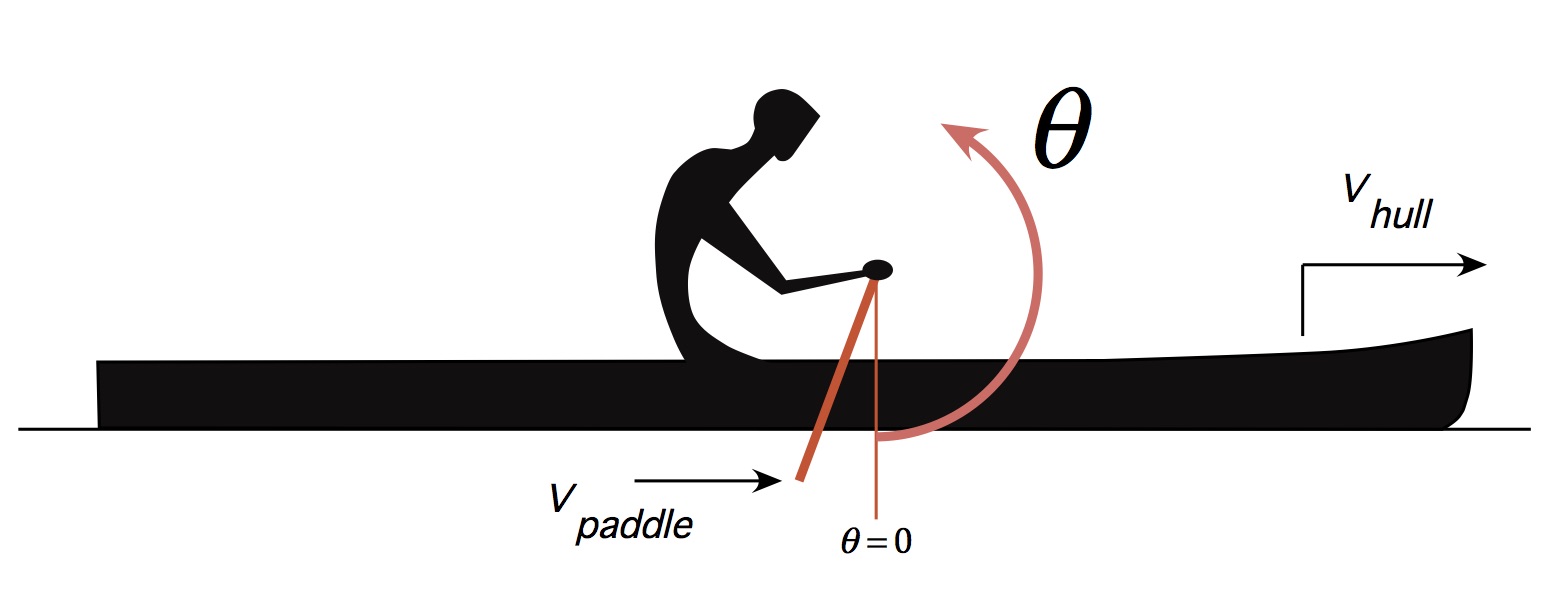I was thinking of doing a 3rd test with a straight as well because I've always suspected there isn't actually a difference at casual speeds.
The paddler in me would appreciate it if you'd also include one run kneeling.
The engineer in me would appreciate it if you'd repeat everything 5 more times and also find 5 more people to run the same tests. Then we can actually interpret the data and draw hard conclusions.
This topic is whether there is any subjective or objective evidence, or even any reasonable beliefs, that bent shaft paddles are more efficient than straight shaft paddles (or vice versa).
Ever since Gene Jensen invented the bent shaft paddle in the early 1970s, the flatwater racing community seems ubiquitously convinced that bents make them go faster. All flatwater racers use bent shaft paddles. So do all outrigger canoe racers in my observation and experience (increasingly, double bend shafts).
But is there scientific evidence for this belief in increased bent shaft efficiency, and does it apply to bent vs. straight shaft paddles in a non-racing, recreational context?
THIS WEBSITE collects a variety of articles on the subject. The most scientific seems to be the following article by Shawn Burke, who holds a BSE in aerospace and mechanical engineering from Princeton University, and MS and PhD degrees in mechanical engineering from the Massachusetts Institute of Technology:

Part 11: About the Bend
by Shawn Burke, Ph.D. In 1971, famed Minnesota paddler and canoe racer Gene Jensen noticed that by bending a canoe paddle at the neck, where the shaft meets the blade, a paddler could move a hull f…
 thescienceofpaddling.net
thescienceofpaddling.net
After many equations and graphs, Dr. Burke concludes in this article:
"WHAT DOES IT ALL MEAN?
"So your paddle blade should be perpendicular to the water at the same time that the relative velocity between the blade and the hull is greatest. Great. Why not just cut off the stroke at that point? Wouldn’t that make the hull move fastest?
"Short answer: No. . . . But great question! In order to arrive at this conclusion I took the time integral of these normalized paddling forces in order to compute what physicists and engineers call impulse. An integral is merely the area under the force curve, here from catch to exit. It captures the entirety of the power phase’s propulsive contribution, not just the peak force. Impulse produces a change in linear momentum, which as we learned in Part 5 determines cruising speed. Using Caplan’s data the bent shaft produced 2.4% more impulse than the straight shaft; in other words, you’ll go faster with the bent shaft. A bit less than I would expect, likely due to our underlying assumptions, but an increase nonetheless.
"All of the above computations were done in MATLAB. I studied other bend angles than 0 and 12 degrees. But the optimum bend angle for the given relative velocity vs. time, and shaft angle vs. time, was 12 degrees. More fundamentally one would need to measure these quantities for each paddler, and then investigate how to optimize bend angle for them individually. But for a given paddle it is best if the blade is perpendicular to the water when the relative velocity is maximized. Phase alignment is good.
"And for this first pass, we’ve seen that Gene Jensen was right. Bent shaft paddles are more efficient at generating greater propulsive force."
So, we have a scientific analysis that a bent shaft paddle produces 2.4% more impulse force than a straight shaft paddle, and the optimum bend is 12°. This is much less propulsive force difference than the 5%-10% advantage hypothesized for bent shafts by other but less quantitative experts.
Assuming this bent shaft advantage is present for racers, would it also be present for recreational paddlers at lower stroke rates and forward hull speeds? I don't see why not. An increase in propulsive force would seem, logically to me, to be an increase in propulsive force at any forward hull speed. Empirically, I have always preferred a bent shaft over a straight shaft for simple straight-ahead paddling (and I kneel with both types of paddles 95% of the time). It's a different story, however, for turning a canoe and maneuvering in whitewater, which is why I also always bring at least one straight shaft paddle.
Moreover, if the forward force advantage of a bent shaft is really only 2.4%, does that really matter to any given one of us? None of us needs a doctorate degree to form an opinion on that question, which involves factors including practicality, cost and aesthetics, and none of us needs be shy about voicing an opinion on bents vs. straights in this thread.

